APES Unit 6 Study Guide
1/47
Earn XP
Description and Tags
energy use and consumption
Name | Mastery | Learn | Test | Matching | Spaced |
|---|
No study sessions yet.
48 Terms
Coal (nonrenewable)
Generated through combustion and used for electricity and industry. Releases GHG; mining increases deforestation and metal concentration in water, causing a loss in biodiversity and increase in erosion
What are human health problems associated with coal?
Black Lung+respiratory issues from GHG release, cancer, and increased mercury in fish we consume once in water sources
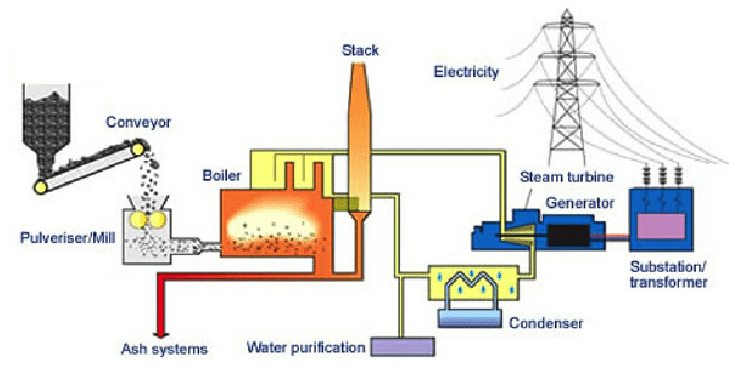
What energy source does this diagram represent
Coal
Which countries have the most coal reserves?
US, China, Russia
Petroleum/Crude Oil/Gasoline (nonrenewable)
Generated through combustion in engines and used for transportation fuel, plastics, and some electricity. Can spill into oceans, disrupting water ecosystems, clear-cutting for drilling, and the release of smog
What are some human health problems associated with Petroleum/Crude Oil/Gasoline?
respiratory issues when mining, skin irritant, can cause cancer, asthma
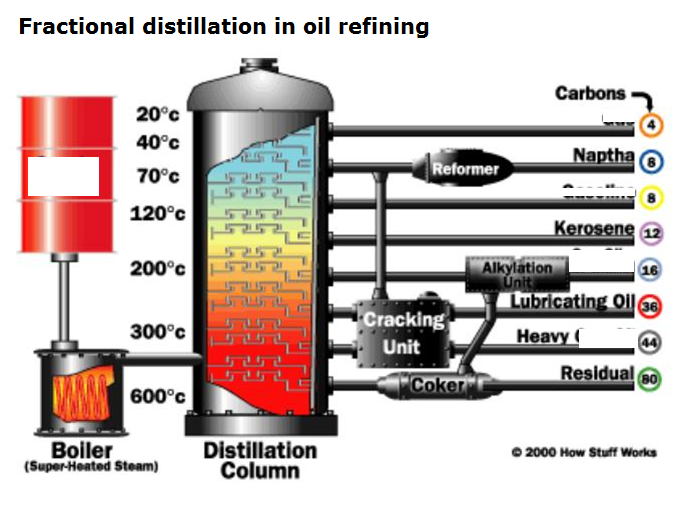
What energy source does this diagram represent
Petroleum/Crude Oil/Gasoline
Which countries have the most Petroleum/Crude Oil/Gasoline reserves?
US, Canada, Venezuela, Russia, Saudi Arabia
Natural Gas (nonrenewable)
Generated through fracking and combustion, it is used for heating, cooking, drying clothes, and transportation fuel. Can contaminate waters, pipelines at risk of exploding, increase runoff, release methane, cause pollution, and environmental disruption
What are some human health problems associated with Natural Gas?
lung illness, increased pollution in air, asthma, and toxic gas release
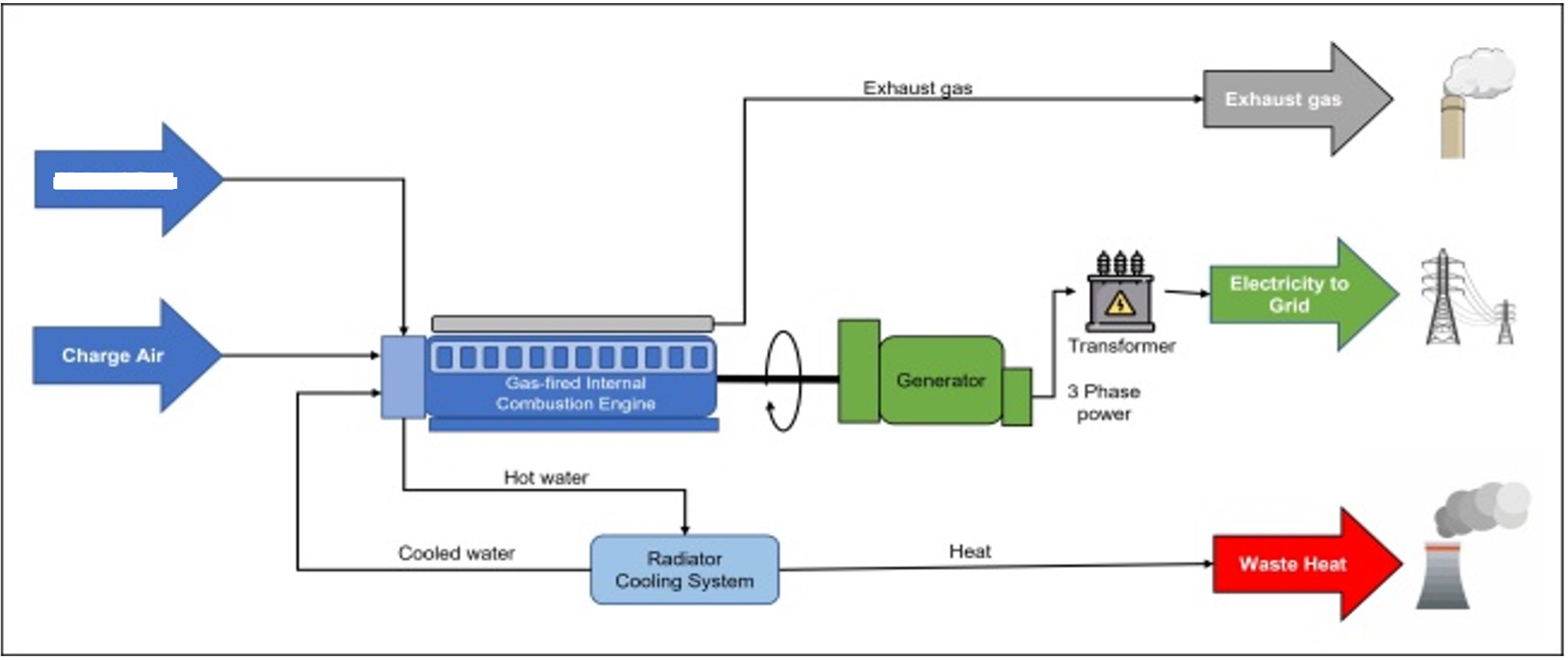
What energy source does this diagram represent
Natural Gas
Which countries have the most Natural gas reserves?
US and Russia
Hydroelectric (renewable)
Generated through kinetic energy of water in dams/rivers spinning turbines, which then power generators to produce electricity, power irrigation, flood. control, and water storage. Can flood lands, alter habitats, and increase sedimentation; very little CO2 emissions.
What are some human health problems associated with Hydroelectric power?
stagnant water can become a breeding ground for mosquitoes, causing spread of diseases.
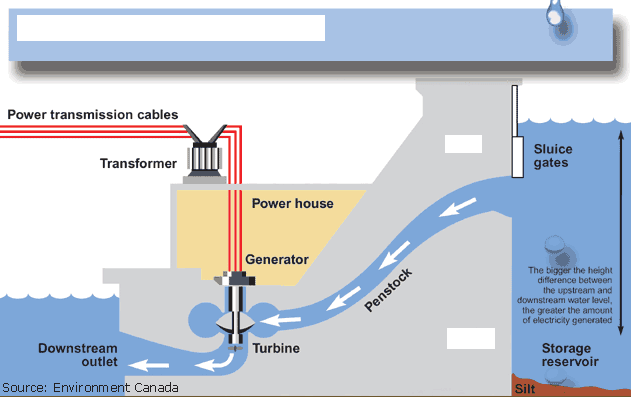
What energy source does this diagram represent
Hydroelectric
Which countries use the most Hydroelectric power?
China, Norway, and Canada
Nuclear (nonrenewable)
Generated by controlled nuclear fission reactions and used for x rays, advanced weapons, GMOS, energy, and Naval ships. Can release radioactive waste, uranium mining disrupts environment, and can case thermal pollution
What are some human health problems associated with Nuclear energy?
Respitory issues, thyroid cancer, radiation exposure, genetic mutations
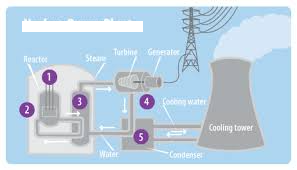
What energy source does this diagram represent
Nuclear
Which countries use the most Nuclear energy?
US and France
Biomass (renewable)
Generated through the burning of waste to create steam that powers a generator. Can power anything that needs electricity, cooking, heating, and ethanol; mainly used in developing countries because of how cheap it is. Can result in deforestation, habitat loss, air+water pollution (runoff), GHG releases, use of fertilizers and pesticides
What are some human health problems associated with Biomass?
Respiratory issues, polluted warer can make you sick
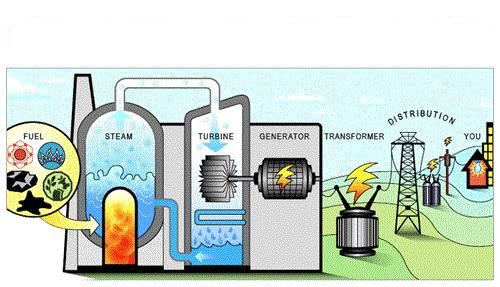
What energy source does this diagram represent
Biomass
Which countries use the most Biomass energy?
US, Brazil, and developing countries
Solar: Passive and Active (renewable)
Passive - Harnesses sunlight through building design and insulation materials to heat, cool, and provide lighting. No environmental problems, but less efficient.
Active - Generates electricity and space/water heating through solar panels that converts sunlight into usable forms. Can cause habitat loss if large scale production.
What are some human health problems associated with Solar: Passive and Active energy?
Only active has health risks, as installation can cause burns and electric shock
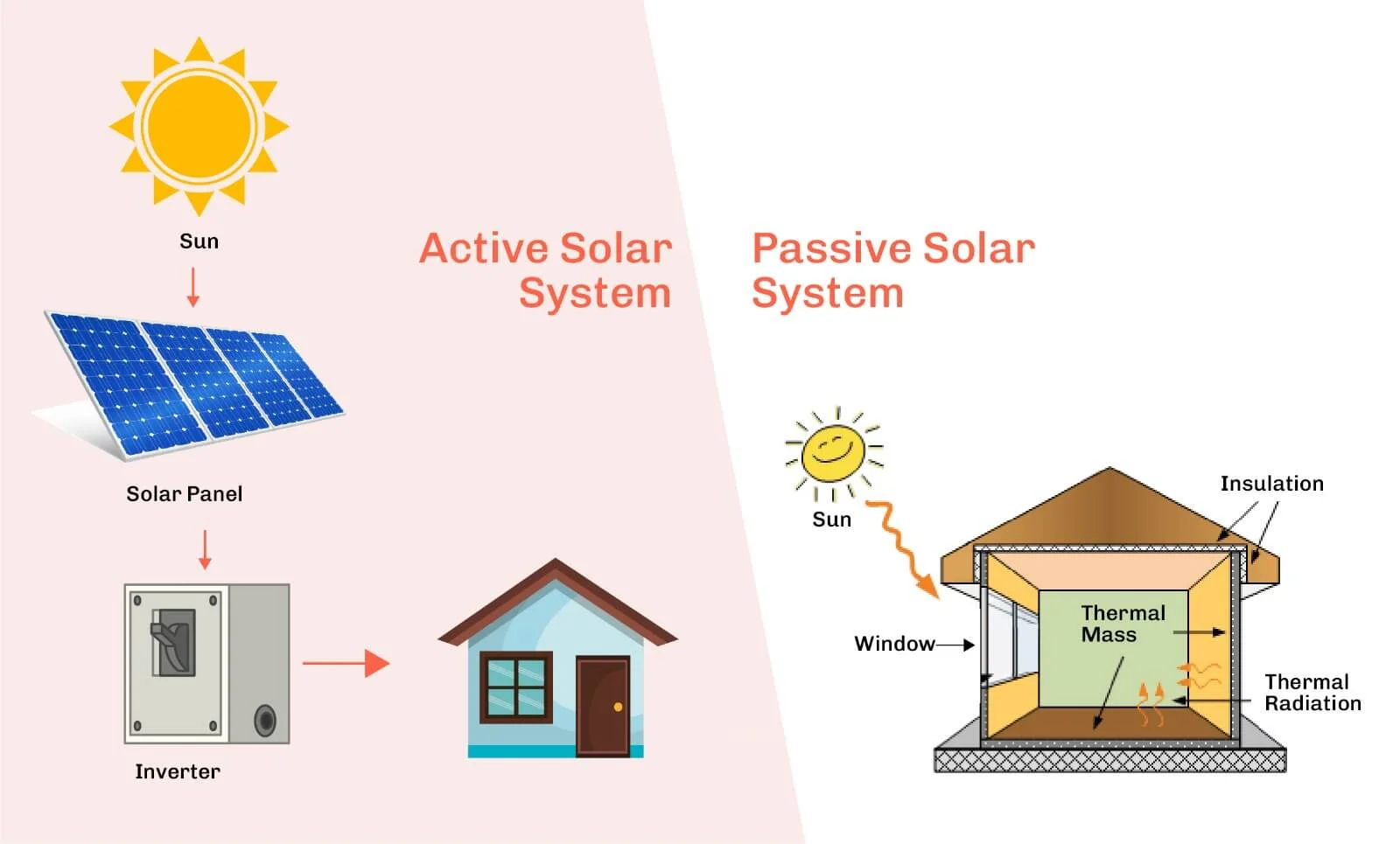
What energy source does this diagram represent
Solar: Passive and Active
Which countries use the most Solar: Passive and Active energy?
China, US, Japan, India
Solar: PV Cells and Concentrating the Solar Rays (renewable)
PV - Light photons strike the surface of a semiconductor material which excites electrons and causes them to create an electrical current. This current directly converts sunlight into electricity.
CSP - Mirrors or lenses focus sunlight into a receiver, which heats a heat-transfer fluid, which then generates electricity through a turbine.
Both use hazardous materials, release GHGs, cause habitat loss, water pollution, increase runoff, erosion, and improper disposal.
What are some human health problems associated with Solar: PV Cells and Concentrating the Solar Rays?
Both use hazardous gases and materials, but CSP can cause burns and eye damage
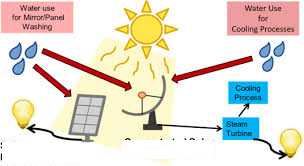
What energy source does this diagram represent
Solar: PV Cells and Concentrating the Solar Rays
Which countries use the most Solar: PV Cells and Concentrating the Solar Rays energy?
Germany, Morocco, and China
Wind (renewable)
Wind farms use high winds to power a generator with creates electricity, pumps water, mills grain, and can be used for sports. Can cause habitat loss to build these farms, noise pollution in neighboring cities, and wildlife death (birds)
What are some human health problems associated with Wind energy?
None disastrous, but neighboring cities report that noise disrupts sleep and the shadow flicker causes headaches and nausea

What energy source does this diagram represent
Wind energy
Which countries use the most Wind energy?
China, Denmark, Swedan
Geothermal (renewable)
Uses earth’s internal heat to produce electricity to power turbines and generators which heats buildings and generates electricity. Can cause air pollution, release GHG, and increase in earthquake activity
What are some human health problems associated with Geothermal energy?
Toxic gas exposure, heavy metals, water contamination, respiratory irritants, and thermal burns

What energy source does this diagram represent
Geothermal
Which countries use the most Geothermal energy?
US, Indonesia, Philippines, New Zealand, Iceland
Ground Source Heat Pump/Geothermal Heat Pump (renewable)
Absorbs natural heat from the ground through pipes and transfers/releases heat into buildings, used to power HVAC and water heating. Can cause groundwater contamination, refrigerant leaks, and releases GHG, and environmental disturbance from drilling
What are some human health problems associated with Ground Source Heat Pump/Geothermal Heat Pump energy?
Respiratory issues from poor air quality, consumption of contaminated water, hazardous gases

What energy source does this diagram represent
Ground Source Heat Pump/Geothermal Heat Pump
Which countries use the most Ground Source Heat Pump/Geothermal Heat Pump energy?
China, US, Sweden, Germany, Finland
Hydrogen (renewable, but way we obtain it is nonrenewable)
Hydrogen fuel is fed through the anode side and oxygen through the cathode side, which is used for transport, microgrids, spaceships, and submarines. Creating the infrastructure to use Hydrogen fuel requires fossil fuels.
What are some human health problems associated with Hydrogen energy?
Highly flammabe, high voltage, and relies on fossil fuels
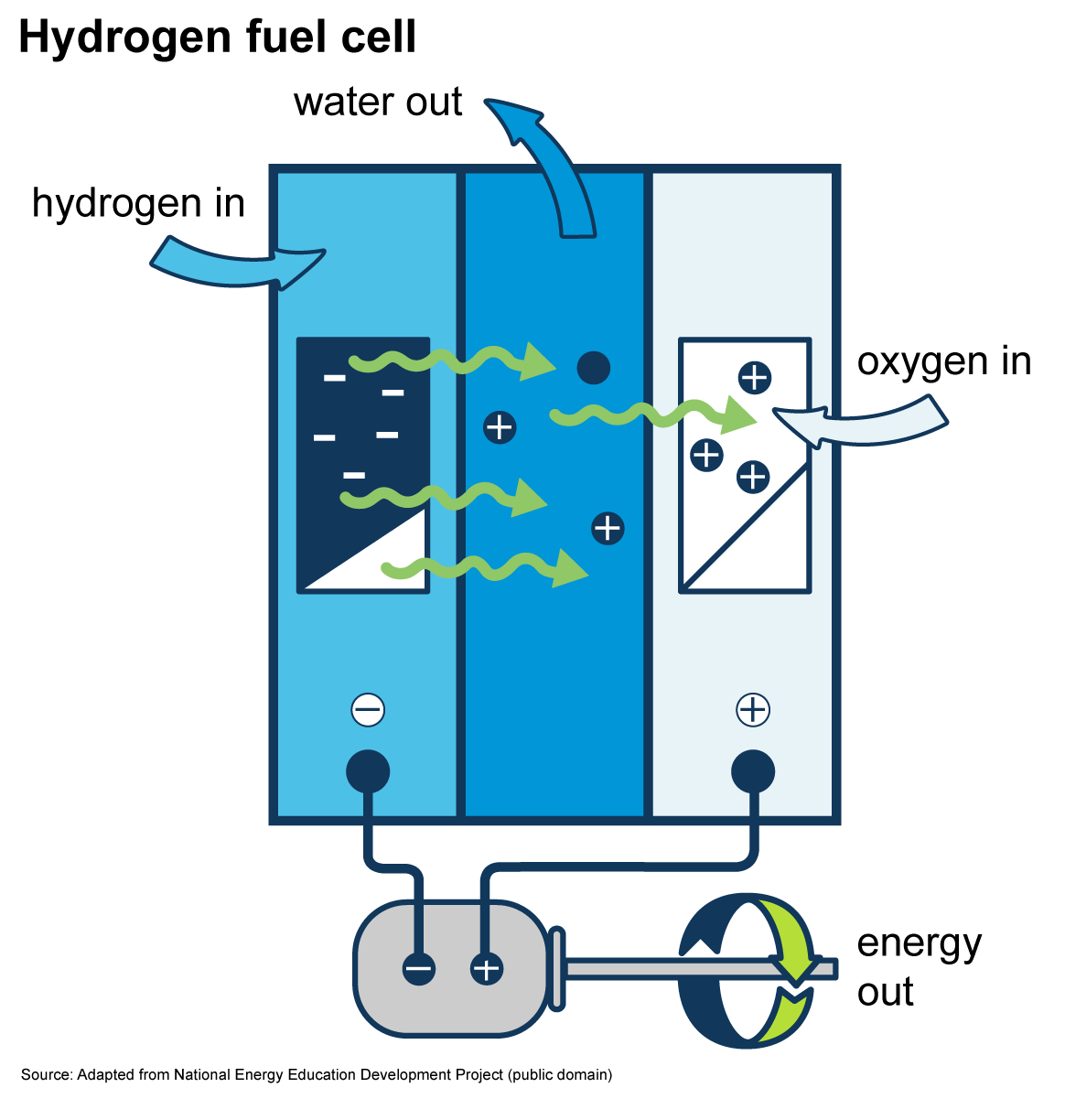
What energy source does this diagram represent
Hydrogen
Which countries have use the most Hydrogen energy?
China (uses green hydrogen; no fossil fuel use), Saudi Arabia, US